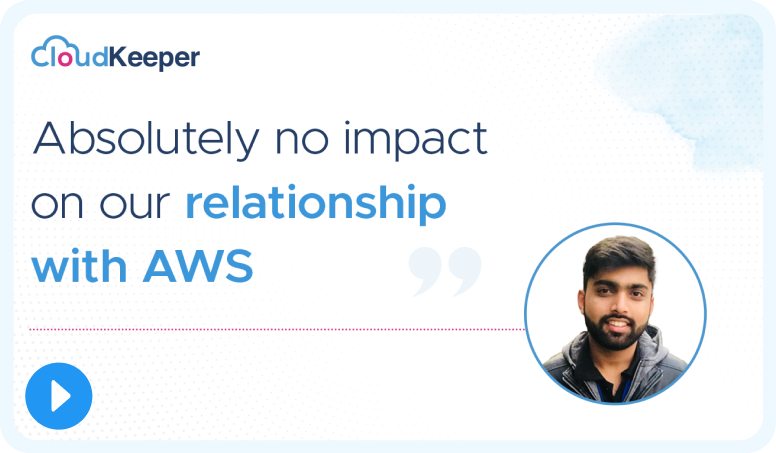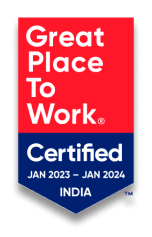Dec 17th,
11:00 AM EST
planning to ensure a smooth cloud transformation.
- Cloud Readiness AssessmentAnalyzing the IT infrastructure to determine its suitability for modernization and identifying goals and desired outcomes.
- Business Needs AnalysisDiving deep into your business goals to tailor a cloud strategy that meets your objectives.
- Modernization RoadmapDeveloping a phased approach to modernize the existing cloud infrastructure, ensuring a smooth and effective transition.
- Security & Compliance IntegrationIntegrating security and compliance best practices into the cloud strategy from the outset.
efficiency and performance.
- Infrastructure and
Workload ModernizationIdentifying and prioritizing workloads for modernization, enhancing the cloud
environment with automation and AI. - DevOps
Pipeline ImplementationEstablishing automated workflows for
continuous integration and delivery (CI/CD) to enhance operational efficiency. - Data Migration
and ManagementSecurely migrating and managing data in the cloud, ensuring data integrity and seamless accessibility. - Adoption of New ServicesIntegrating the latest cloud services and
technologies to keep the infrastructure
cutting-edge. - Third-Party Tech Stack GuidanceProviding expert guidance on incorporating
third-party technologies to complement and
enhance the cloud environment. - Proof of Concept (POC)Develop and test new solutions quickly
with Proof of Concept services, reducing
time to market.
monitoring, support, and improvement.
- 24/7 Cloud and DevOps SupportProviding round-the-clock support for cloud and DevOps needs to ensure seamless operations and rapid issue resolution.
- Cost Optimization ServicesImplementing proactive measures to identify and achieve cost savings through continuous cloud usage monitoring and analysis.
- Resource-Level VisibilityDetailed insights into cloud resource usage and performance to optimize management and control.
- On-Demand Professional ServicesDelivering expert support and consultation as needed to address specific challenges and opportunities in your cloud environment.
your Cloud Cost Optimization Partner?
15+
Years of experience in cloud
100+
Certified solutions architects & cloud experts
400+
Global customers
20%
Average savings on the entire cloud bill
Listed in 3 out of 5 segments in IDC Market
Glance: FinOps Cloud Transparency, 2Q23
Recognized by ISG Research for its proven
capabilities and scale in providing FinOps
solutions across 14 categories
Leader in the G2 Grid for Cloud
Cost Management
Frequently Asked Questions
-
Q1. What is cloud modernization?
Cloud modernization is the process of transforming outdated or legacy systems, applications, and IT infrastructure to fully leverage the capabilities of modern cloud environments. It involves a combination of upgrading technology, re-architecting applications, and optimizing resources to enhance performance, scalability, and cost-efficiency.
At its core, cloud modernization aims to address the limitations of traditional IT setups by adopting cloud-native technologies like serverless computing, containerization, and microservices. It often involves rethinking the design of applications to be more agile and responsive to business needs, enabling faster development cycles and seamless scalability.
-
Q2. How does CloudKeeper ensure a smooth transition to modernized infrastructure?
Our certified experts follow best practices, leveraging proven methodologies, automated tools, and robust testing to ensure a seamless transition.
-
Q3. Why do you need an experienced cloud modernization team?
An experienced cloud migration/modernization team is crucial for the following:
- Risk Reduction: Minimizing downtime, security risks, and data loss.
- Performance Optimization: Ensuring efficient, scalable, and cost-effective cloud infrastructure.
- Avoiding Pitfalls: Overcoming common challenges like compatibility and integration issues.
- Faster Results: Accelerating migration and realizing cloud benefits quickly.
- Cost Control: Managing resources to prevent overspending.
- Compliance: Ensuring alignment with industry best practices and regulations.
- Continuous Improvement: Ongoing optimization after migration.
- Tailored Solutions: Customizing strategies for specific business needs.
-
Q4. How do I know if my business is ready for cloud modernization?
If your applications face performance issues, rising costs, or lack scalability, it’s a good time to consider modernization. CloudKeeper offers an initial assessment to help determine readiness and potential benefits.
-
Q5. What are the long-term benefits of cloud modernization?
Long-term benefits include increased efficiency, improved security, faster time-to-market for applications, better customer experiences, and the ability to innovate quickly.
-
Q6. What are the different approaches to cloud modernization?
There are a number of different approaches to cloud modernization, depending on the specific needs of the business. Some common approaches include:
- Re-hosting: This approach involves moving existing applications "as-is" to the cloud with minimal modifications. This is the quickest and easiest way to migrate to the cloud, but it may not take full advantage of all the benefits that the cloud has to offer.
- Replatforming: This approach involves modernizing applications to leverage cloud-native features and services. This can improve the performance, scalability, and security of applications.
- Repurchase: This approach involves analyzing licensing and identifying opportunities to optimize costs by transitioning to cost-effective cloud subscriptions.
- Refactoring: This approach involves restructuring applications to fully exploit cloud functionalities, maximizing long-term benefits.
- Retiring: This approach involves decommissioning unused or outdated applications, streamlining your IT landscape, and eliminating unnecessary costs.
-
Q7. What is the difference between cloud migration and cloud modernization?
- Cloud Migration: This involves moving existing workloads, applications, and data from on-premises infrastructure or another cloud to a cloud environment. The primary goal is to achieve cost savings, scalability, and accessibility. Migration often follows a "lift-and-shift" approach, where applications are moved without significant changes to their architecture.
Cloud Modernization: This focuses on transforming and optimizing applications to leverage cloud-native features and services fully. It often includes re-architecting, re-platforming, or rebuilding applications to enhance performance, scalability, resilience, and efficiency. Modernization aligns applications with the latest technologies like microservices, serverless computing, or containerization.
In short, migration gets you to the cloud, while modernization optimizes and enhances your applications for the cloud environment.
Speak with our advisors to learn how you can take control of your Cloud Cost










